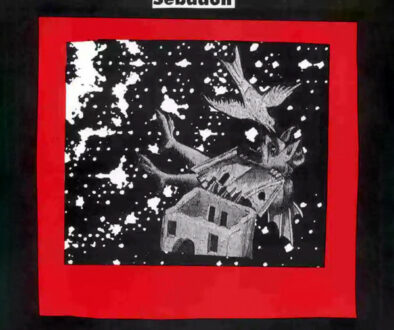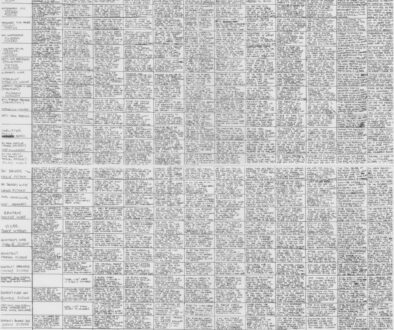The Whole Damned Brazen Con Of It (Book Three, Part 50: Judge Dredd)
Previously in The Last War in Albion: Garth Ennis was a writer who could pen incredibly moving and succinct portraits of human emotion, and who could just as easily pen the most self-indulgent edgelording crap imaginable.
“The trick was that none of his spells, none of the words, meant much at all. What did mean something was the presentation. Putting on a face. The whole damned brazen con of it.” – Pete Milligan, Hellblazer
Nor does his career divide neatly into some narrative of the talented early years vs the self-indulgent later years—at almost all stages he finds himself producing both types of comics at the same time.
Like most writers from the British scene who were breaking out in the US, Ennis continued doing work in the UK scene until he’d fully established himself. In the face of the market collapse that happened in the early 90s, however, this meant that his UK work was essentially focused entirely on one publication: 2000 AD. But just as Ennis had ridden his breakout work in Crisis straight to a top job in the proto-Vertigo scene, Ennis was not left to toil on Future Shocks, and instead slotted in as the regular writer of the title’s marquee feature Judge Dredd, at first with a series of fill-ins starting with Prog 711 in December of 1990, three months before his first Hellblazer issue and eventually becoming the regular writer from late 1991 through the summer of 1993, just over a year before he wrapped on Hellblazer.

Remarkably, this makes him the first significant participant in the War to take on what is arguably the most iconic British comics character ever created. Moore had an early Judge Dredd script rejected, and Milligan had written a story featuring spinoff character Judge Anderson back in 1987, but for the most part Dredd was a character who existed in parallel with the early years of the War. He had been around since 1977, debuting in the second issue of 2000 AD, but always having been imagined as a key feature of the magazine. The concept had several origins. On one hand, Pat Mills had been considering a horror strip named after the British reggae artist Judge Dread, but ultimately discarded the idea. Separately, he had approached writer John Wagner, with whom he’d helped create Battle Picture Weekly, to do a strip in the vein of his earlier One-Eyed Jack, a Dirty Harry knockoff for IPC’s by then defunct Valiant. Wagner took the title from the abandoned horror strip, changing the spelling on the suggestion of Kelvin Gosnell, and developed the familiar lawman of Mega-City One. On art duties were Carlos Ezquerra, who modeled Dredd on David Carradine’s character in the trash-cult classic Death Race 2000, and whose decision to move the setting into the far future was crucial in the development of Mega-City One.
In the course of this process Wagner dropped out of the project, and Mills cycled unsatisfyingly through a number of freelancers, resulting in the delay of the strip past the first issue. Eventually he went with a script by Peter Harris, albeit one he’d substantially rewritten. Mills wrote the first seven installments before Wagner came back for the first multipart storyline, The Robot Wars, which saw Dredd crushing a revolt by entirely sympathetic robots upset with being treated as slaves. Wagner from this point became the dominant voice on the character, scripting virtually the entirety of the character’s 1980s stories, usually with writing partner Alan Grant.
The usual mode of operation for Judge Dredd was to move back and forth between short stories—a mixture of one-offs and short arcs—and longer epics. Initially the epics happened about once a year, but eventually they slowed so that the shorter form became the clear bread and butter of the strip. Within this form the default were overtly humorous strips. These strips are not generally classics—when people create lists of the best Judge Dredd stories it’s generally the big epics people go to. But they are the bread and butter, establishing the basic tone of the strip. For the most part they arrange a small number of tropes, most of them established in the strip’s early days. These include broad social satires, stories in which Dredd hunts down and kills or imprisons a largely sympathetic character, a litany of stories in which Judge Dredd faces a trope from some other type of story (vampires, werewolves, superheroes, etc), and of course that 2000 AD standard, parodies and pastiches of other pieces of popular culture.
At the core of these stories is the basic satire that animates Judge Dredd. On the one hand it is structured so that its title character is the hero. It’s a cop strip, Judge Dredd is the cop, and he has a series of adventures in which he always defeats the antagonist. Except as mentioned, very often these antagonists are far more sympathetic than Dredd. This results in the unusual setup whereby the audience is positioned so as to root for the unsympathetic fascist—a strange and alienating pleasure that fit in well with the brash satire of 2000 AD. There were, however, no shortage of tensions in this, which eventually led to the breakup of the Wagner/Grant writing partnership, as Wagner wanted to humanize the character while Grant wanted to push harder in the direction of having Dredd be a brutal and uncompromising fascist.

More generally acclaimed are the long-running epics, which tended to run for twenty or more issues, occupying months of 2000 AD. The first gesture towards this came with the Robot Wars story a few issues in, but that ran only nine parts; the first proper epic came in 1978 with The Cursed Earth, which saw Dredd make a journey out of Mega-City One and into the barren and post-nuclear wastes that make up the bulk of the United States. But perhaps the most famous of these was Apocalypse War, in 1982. This saw a war between Mega-City One and the Russian East-Meg One, which begins with East-Meg One unleashing a barrage of nuclear missiles, immediately bringing Mega-City One to its knees. This is accompanied by a swath of bitter satire—when it becomes clear East-Meg One has launched missiles at Mega-City One, the Chief Justice goes to inform the citizens, prompting Dredd to scoff, “The citizens? What makes you think they’d be interested?” And when Mega-City One attempts to fire missiles in response, East-Meg One successfully diverts them into a parallel universe, prompting a several page sequence in which an alternate Earth that’s experienced a thousand years of peace is destroyed utterly by them.

The most iconic moment in Apocalypse War, however, comes at the end when, after issues of guerilla warfare in which Dredd and his colleagues struggled to hold back East Meg One’s forces, Dredd leads a squad in an attack on East Meg One and successfully seizes one of their nuclear bunkers. One of the East Meg One soldiers begs him, “Please, Dredd—don’t do it! There are half a billion people in my city—half a billion human beings! You can’t just wipe them out with the push of a button!” To which Dredd coldly replies, “Can’t I?” before pushing the button and obliterating East-Meg One. It’s a stunning moment, and one that had a profound effect on a twelve year old Garth Ennis, who recalls it as “the greatest moment in comics history” and explains that it’s “why I’ve never been able to care about Batman, or Wolverine, or Iron Man… or any of them, really. Not because of what characters like that would or wouldn’t do, but because their publishers would never have the courage to have them written into such a situation.”

Perhaps the most interesting storyline in Judge Dredd, however, followed neither of these structures. Instead it formed an ongoing plot thread beginning with a one-off story in 1986 and running through the end of 1991. Typically referred to as the Democracy arc, it provided the most thorough engagement with the complexities of centering a story on an openly fascist protagonist. The first installment came in “Letter From a Democrat.” This was an entirely somber piece that paralleled what is essentially a woman named Hester Hyman’s suicide note to her husband with a depiction of her final actions, seizing a television studio to read a manifesto calling for the return of democracy only to be shot dead by Dredd, who advises her grieving husband to “let this be a lesson to you, citizen. Democracy’s not for the people.” It was a stark and striking story, quite out of keeping with the bread and butter of Judge Dredd stories in its utter and unblinking seriousness, portraying Dredd’s fascism in a wholly unsympathetic light with no comedic leavening.

A year and a half later Wagner and Grant returned to the plot for the three-part “Revolution,” which was a direct sequel to “Letter From a Democrat,” beginning with the grieving husband, Gort Hyman, making a pro-Democracy speech of his own at a rally as part of an effort to organize a pro-democracy march on the Justice Center. In response the Chief Judge tasks Dredd with sabotaging the march, explicitly telling him that “on this one you write the law.” And so Dredd and his colleagues begin a lengthy process of covertly undermining the march. One organizer is arrested for bigamy because of a clerical error on a piece of divorce paperwork, another slandered with a photo from a party where he dressed as an East Meg One soldier, while intimidating Hyman into turning on the march by threatening to draft his and Hester’s children as Judges. Finally, on the march itself infiltrators in the crowd initiate violence against the Judges, allowing them to violently beat down and arrest the marchers and ensuring its failure. It’s a brutal satire based largely on depicting exactly what actual police forces do to undermine leftist protests—an instance of Judge Dredd’s satire being achieved with barely any exaggeration from the real world.

The Democracy arc saw its highlight in a storyline called America that helped launch the monthly Judge Dredd Megazine, a spinoff magazine focusing entirely on Dredd. Widely referred to as the single greatest Judge Dredd story ever, America was a noir story in which Dredd served as an antagonistic presence in the background. He opens and closes the story with a pair of monologues, delivered in front of the Statue of Liberty (and, looming larger behind it, the Statue of Judgment) in which he proclaims the glories of rigid and inflexible law, declaring that “Justice has a price. The price is freedom.” This opening monologue is then immediately contrasted by one from Bennet Beeny, the primary narrator and main character of the story, who proclaims that it is a love story. Like Dredd, he is lying, although his is a subtler lie, albeit one telegraphed at the end of his first page when he promises to “tell you how I betrayed her—and when I’ve finished you’ll despise me for what I did.”

The “her” in this monologue is the eponymous America Jara, born in Mega-City One to Puerto Rican immigrants and named America in a rush of first generation immigrant optimism. The story follows her and Beeny’s life from childhood on, and the relationship between them quickly becomes clear. America is a brave and defiant child, standing up for Beeny against both childhood bullies and the attentions of a Judge, who quickly grows up to be a pro-Democracy activist. Beeny, meanwhile, is a coward who believes in playing by the rules, but who is madly in love with America. Eventually they part ways, with Beeny moving to Mega-City Two and assuming that America perished in the Apocalypse War. Eventually he became a successful singer of novelty songs and moved back to Mega-City One, where he ran into America and quickly found himself dragged into the world of her pro-democracy terrorist group Total War. America solicits him to help launder money for the group, sleeping with him in the process. He complies, but rats her out to the Judges, who bust their attack (the symbolic destruction of the Statue of Liberty), gunning them down even as they surrender, leaving America last before killing her on the steps of the Statue for maximum symbolism. Beeny, whose throat had been injured earlier in the story, then makes a deal to have his brain transplanted into her body, effectively possessing her forever after getting her killed. It’s a both creepy and heartbreaking story that further develops the Democracy arc by moving beyond the fascist Judges and the noble but seemingly doomed activists to depict the people who allow the Judges to exist—ordinary people whose selfishness and cowardice causes them to abet the atrocities of the system.

Contemporaneously with America and the debut of the Judge Dredd Megazine John Wagner executed one of the most formally stylish moments of Judge Dredd history back in 2000 AD. This came in the form of a strip called The Dead Man, which began in Prog 650. Published under the pseudonym of Keef Ripley to hide what was going on in the story, the strip showed a young boy discovering a badly burnt and seemingly dead man in the desert. The man, it turns out, is not in fact dead, although he is amnesiac. Ultimately he and the boy go on a quest to recover his identity. It gradually becomes clear that the story is set in the same universe as Judge Dredd, most obviously in the mentions of the desert as the Cursed Earth, but it was not until the end of the story when the real twist became apparent: the eponymous Dead Man was in fact an exiled Judge Dredd. [continued]





June 27, 2022 @ 9:04 pm
These keep bumping up against Marshal Law and sliding off as though magnetised . . . also reflected in Lord Horror and Wyatt / Leatherhead from New Statesmen. Might be a bit afield from the Ennis career but since Ennis reopens this particular mine with The Boys I hope there’s room ahead for his relationship to Mills.
June 29, 2022 @ 9:58 am
There’s an awful lot of bread-and-butter in this piece…
(As someone who grew up with 2000AD and Dredd, I’m pretty sure it’s a key part of the reason why I’m still not a ‘conservative’ now that I am properly middle-aged.)